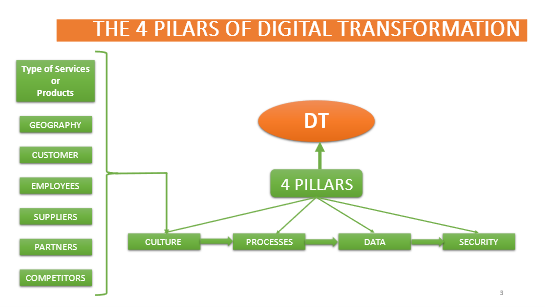Work like a Surgeon
There is an old joke about a surgeon and a mechanic that goes like this:.
A mechanic was removing an engine part from the motor of a car when he spotted a world-famous heart surgeon in his shop. The heart surgeon was waiting for the service manager to come take a look at his car. The mechanic shouted across the garage, “Hey Doc, can I ask you a question?” The famous surgeon, a bit surprised, walked over to the mechanic working on the car.
The mechanic straightened up, wiped his hands on a rag, and asked, “So, Doc, look at this engine. I can also open it up, take the valves out, fix them, and put in new parts, and when I finish, this will work just like a new one. So how come I get a pittance and you get the big money when you and I are doing basically the same work?” The surgeon paused, smiled, leaned over, and whispered to the mechanic, “Try doing it while it’s running.”
The world in which a business analyst operates is quite like the surgical world, in the sense that a BA works with a live or running organisation and needs to make the necessary changes or improvements to the company without shutting down the currently running processes, delivering the required change while reducing impact to the minimum.
We will extend this analogy a little further from the beginning of the process (the patient comes in for consultation) until its logical conclusion (the patient goes home with the issue fixed) and see what observations we can gain from the medical world. We will also use this journey to look at the toolset available to a business analyst and determine which tool would work the best for which stage of the process.
Let us follow the example of a hypothetical heart surgeon. A patient complaining of chest pain is referred to him by a local GP. The surgeon reviews the medical exam tests conducted by the GP, forms some initial conclusions about the issue, and validates the same through further diagnosis of the patient. Based on the diagnosis and the testing, the surgeon determines that the heart is not in a good condition and that there is a high chance of heart failure. The surgeon advises that heart surgery is required to resolve his condition.
This carries some risk; however, avoidance of the surgery carries a greater risk and is more likely to result in cardiac arrest. He directs the patient to the hospital admin team to get an idea of the costs involved. The hospital admin team provides the patient with all the details, including the overall cost, including the pre-operation treatment, cost of operation, cost of recovery procedures, and timelines of each stage, so that the patient has a good idea of when the operation procedure will start, how long the entire process will take from end to end, and how much it will cost.
The patient agrees with the cost and the timelines and makes the arrangement to pay the funds to the hospital by the agreed date. The surgeon proceeds with the operation. The operation is successfully completed on time, and the patient is discharged with regular follow-ups scheduled.
Now, let us consider a parallel example in the software sector, i.e., a medium-sized software company. The company has noticed a steady decrease in profits along with an increase in customer complaints and wants to fix this issue. The company engages a reputed consultancy for this.
The BA from the consulting team arrives at the company and conducts a detailed study of the current state and the reported complaints. Through a series of discussions with the company members and interviews, the BA identifies all the key parties involved in the processes and complaints. The BA organises a series of workshops with the company representatives and uses several problem-solving techniques, such as the 5 Whys, root cause analysis, the fishbone diagram, and flowcharting of the current process, to get to the bottom of the issue.
Advertisement
The BA ensures that all the relevant parties understand the question by providing them with clear objectives for the workshops and what is expected of them. During the workshop, the BA also ensures that all the members get an opportunity to express their views, so that the findings are as unbiased as possible.
After this process, the BA gets a good understanding of the current state and the main causes of the issues that the company is facing. It appears that the existing software used by the company is quite old. not in line with the current needs, resulting in inefficient and time-consuming processing. There are also a few legacy processes being carried out, with some steps that are no longer relevant but are still being carried out as the staff have always worked that way.
This is resulting in a poor customer experience, with a corresponding decrease in sales and an increase in customer complaints.
These series of workshops have helped the BA and the senior management of the company get a clear understanding of the current state and the main causes of the issues being faced by the company. To take the next steps, the BA also needs to get a good understanding of the future state, i.e., what the company aims to achieve as part of its short- and long-term objectives. To do this, the BA requests that the company provide its vision, goals, and the approach or strategy decided to achieve these goals. Some of this may be readily available in the company documents but may require further discussion with senior stakeholders to clearly flesh it out so that there is no misunderstanding.
For example, the company may have planned, say, a 20 percent increase in market share, but may not have thought through or clearly spelled out all the associated elements, say, an increasing rate of production, the addition of new machinery or employees, the setup of further logistics, getting additional funding, etc. The BA helps the company work through all the dependencies and impacts and create a comprehensive future state model.
The company now has a good understanding of the as-is, or current state, and the to-be, or future state. The BA now organises another set of workshops involving all the key participants to get a clear understanding of what needs to be done to move from the current state to the future state; in other words, the BA is gathering and eliciting the requirements. During this process, the BA ensures that all the identified problems and issues and the vision of the future state are clearly understood by all the participants. This helps to ensure that the requirements are in line with the needs of the company.
Based on the feedback received from the various members of the company and their understanding of what is available in the market, the BA recommends a set of options, including some quick wins through process changes and long-term solutions such as upgrading the software or replacing it with a more efficient one. The BA clearly highlights to the senior management of the company the risks associated with staying as is and the costs, benefits, and risks of the proposed solution options. The BA also supports the company with the change impact analysis process, i.e., how the changes would impact each of the company staff involved in the current process and what can be done to ensure a smoother transition.
Once the BA gets agreement from the key stakeholders on which solution or solutions they would like to progress, the larger team, including the project managers, system architects, IT consultants, testers, and other change management personnel, is brought together along with the key members of the company, and the project is initiated. The BA carefully monitors the requirements through the various stages of the development process using a requirement traceability matrix to ensure that there is no dropping of key requirements or addition of wants based on the personal desires of some stakeholders.
The BA also ensures that the company representatives are kept well informed about the progress of the project and that there is proper end-to-end, two-way communication. This ensures that the project is successfully delivered with minimal post-project impacts.





